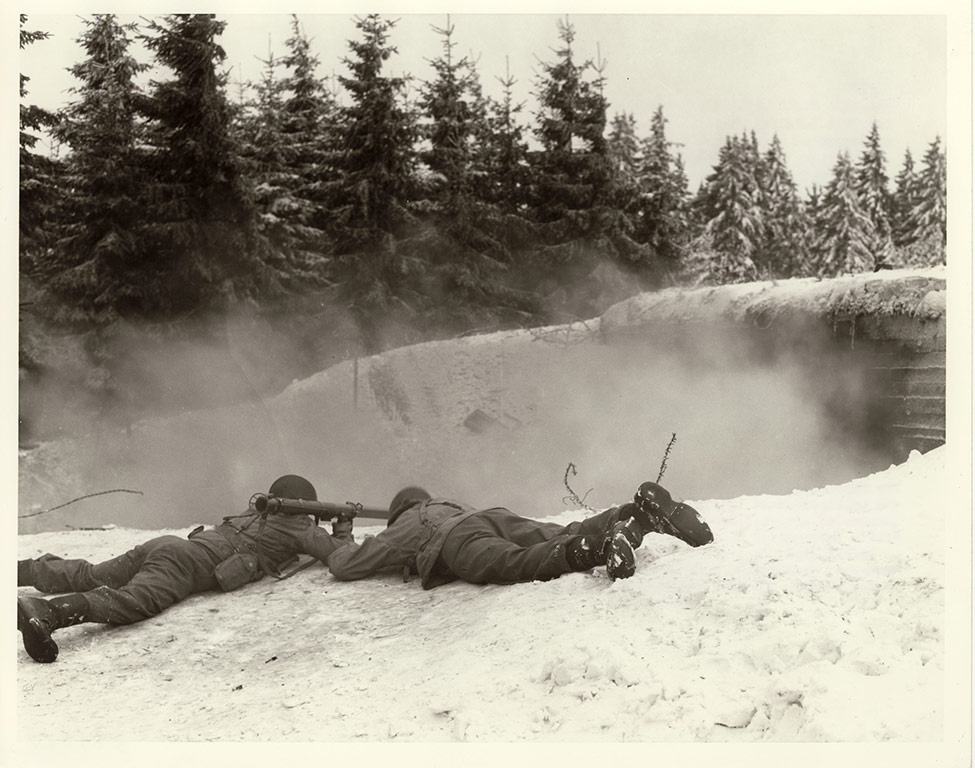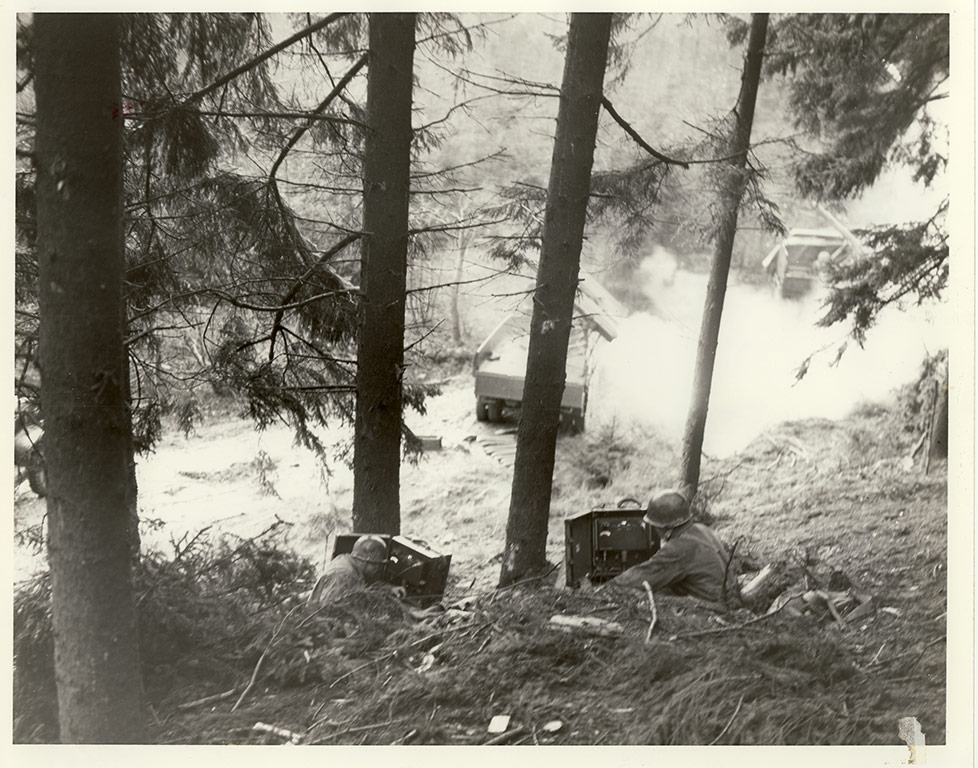- Point of Interest
- Mittelweg, 52393 Hürtgenwald, Allemagne
Between September 1944 and February 1945 American and German soldiers faced each other directly in the pillboxes at the Ochsenkopf. In the almost inaccessible forest the Germans were able to defend their fortified positions for a long time.
When the American soldiers arrived in the Huertgen Forest area, they first had to get used to the ‘tricks’ of fighting in the forest. Their German counterparts, on the other hand, were reinforced by troops that were seasoned on the eastern front and all too familiar with the tactics of forest warfare.
Especially in the area of the Ochsenkopf and Peterberg the Germans had another advantage: They could withstand American fire in the pillboxes that dotted the hills. These pillboxes were part of the ‘Westwall’ (or ‘Siegfried Line’ as the Allies called it), the last line of defence of Hitler’s Third Reich.
It is often discussed what role the Siegfried Line played during that bloody autumn of 1944. The trenches and fortifications of the First World War were mostly obsolete. Tactics as well as weaponry were quite different thirty years later.
The pillboxes of the Siegfried Line in the northern Eifel, however, were generally situated in dense spruce forests where every tree was a potential tank obstacle. The Germans were able to defend the pillboxes within a short radius, even if the actual front line had moved further.
In the bewildering forest every single German company, every regiment could hide behind massive concrete walls. This resulted in a position-fight that went on for several months, calling to mind the warfare of the First World War. Only after the German counterattack, the ‘Battle of the Bulge’, had been repulsed, was the 1st U.S. Army able to move beyond the pillboxes and pass the Kall Valley.


